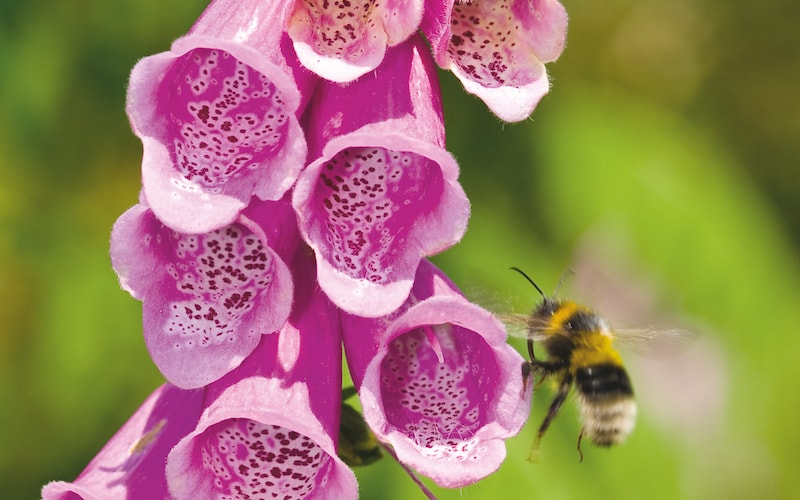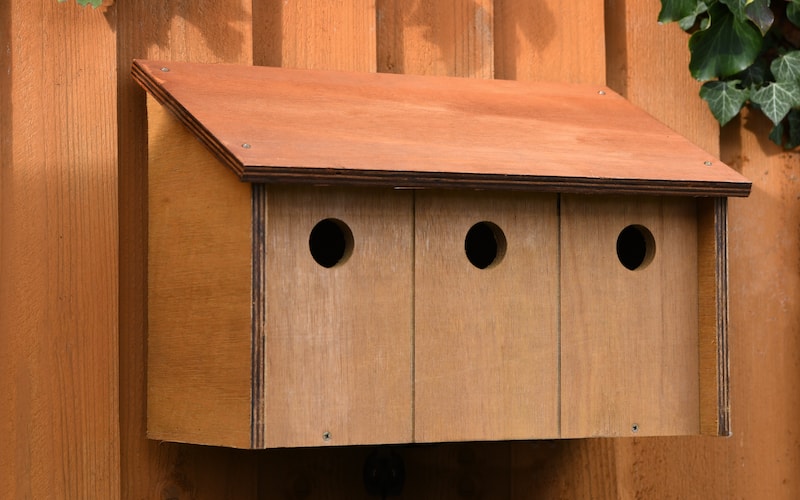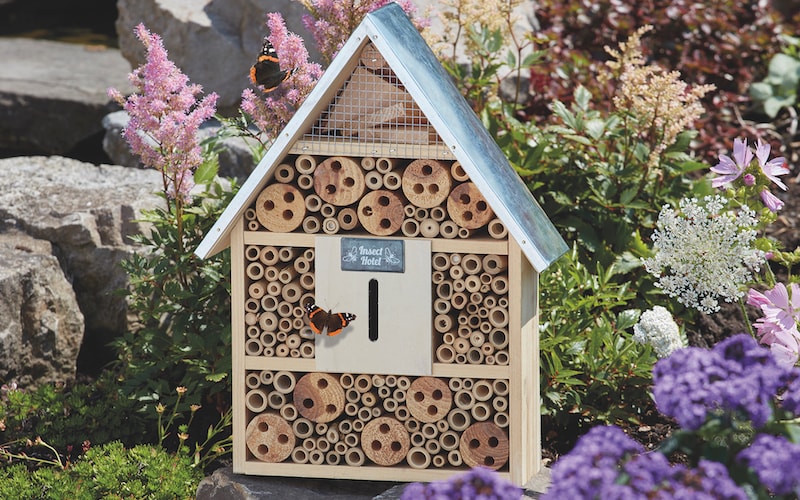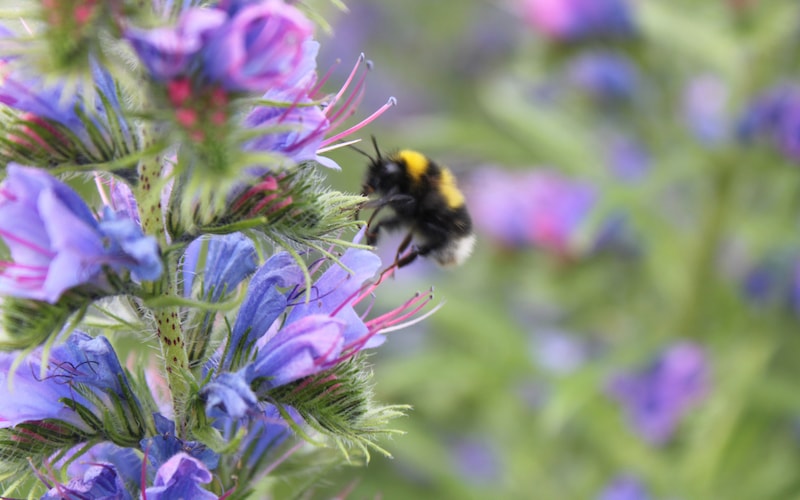Gardening with nature in mind is one of the best ways to support local wildlife. Whether you’re tending a large garden in the countryside, a suburban plot, or a city balcony or back yard, there’s always something you can do to give birds, mammals, butterflies, and bees the helping hand they need to thrive. Here are some of the best ways to encourage more wildlife to visit your garden.
Best ways to encourage more wildlife into your garden
- Leave lawns to grow long, or mow less frequently
- Cut hedgehog holes in your garden fences
- Sow native wildflower seeds to encourage bees and insects
- Leave patches of nettles to grow
- Create ponds or leave out water dishes
- Build leaf and log piles
- Install nest boxes and bug hotels made from natural materials
Best ways to make space for bees and pollinators

Image: Wild Foxglove Seeds from Suttons
Leaving an area of lawn to grow long increases the number of different grasses and wildflowers it contains and provides more pollen for bees and other insects. Birds like robins, thrushes and blackbirds will love it, plus you’ll also potentially attract swifts, swallows and other species which feed on insects on the wing. And once the grass sets seed, you’ll also get to see more sparrows and finches which feed on it.
Stinging nettles are another great way to attract wildlife to your garden. About 40 species of insects rely on stingers – everything from red admiral butterflies to ladybirds and everything in between. The hollow stems of dead plants make great homes for bugs and larvae, and if you harvest some of your nettles, you’ll also find that their high nitrogen content makes them a good compost activator and green fertiliser.
Bees are specialists, with different species thriving on different plants to avoid competition. Aim to grow a good variety of bee-friendly pollen-rich flowers in your garden or outdoor space, with differing flower shapes and blooming periods. Wildflowers (such as bluebells and foxgloves) and lawn weeds (such as clover) are especially beneficial, with dandelions providing vital pollen early in the season.
Trees and shrubs and hedging plants are also a great addition to your wildlife garden, providing masses of flowers in winter and early spring. Cherry, willow and hazel are a good way to guarantee essential food for bees early in the year.
Best ways to make space for birds and mammals

Image: Oakham Sparrow Terrace Nest Box from Suttons
If you’d like to see more birds visiting your garden, plant a crab apple tree or two. Not only does this tree provide shelter for birds, but it’s also a food powerhouse. Many, many species of insects live in crab apple trees, and birds and garden mammals like badgers, foxes and voles enjoy eating windfall fruit.
Nest boxes are increasingly vital for helping to protect the dwindling numbers of native British songbirds. Swallows and swifts, in particular, have suffered from changes in materials and building techniques which have seen a big reduction in potential nesting sites. The addition of a specialist swift or swallow nesting box under your eaves is a great thing to do for these birds.
Birds need water to drink and bathe in, so do consider installing a garden pond, buying or building a bird bath, or if that’s not possible, leave out some water in shallow saucers. If you do decide to provide a drinking and bathing station for birds, make sure you clean it and change the water often to prevent nasty infections.
When was the last time you saw a hedgehog in your garden? If there are no gaps in your garden fences, they won’t be able to get in and out. To remedy this, cut a 13cm (5”) square hole at the bottom of a garden fence panel on each side of your garden to create hedgehog highways.
Best ways to help garden wildlife during the winter

Image: Wooden Insect Hotel from Suttons
There are lots of things you can do to support wildlife in your garden, but sometimes it’s what you don’t do that really counts! With this in mind, make sure you leave space for natural rewilding. Instead of tidying up the garden this autumn, leave seed heads in place to supply vital food. Allow leaves to remain on the ground, and bugs will set up home amongst them. And if you can create a few log piles, bugs and mammals will have a safe space in which to sleep the winter away.
If you don’t have much space – a bug hotel is a great addition to your garden, providing lots of hidyholes for insects and larvae. Bird feeding stations and bird baths are a good way to help overwintering birds, and building or buying a hedgehog home provides excellent shelter for our prickly friends.
Every gardener who makes space for nature will help to form vital wildlife corridors, which enable insects, birds and mammals to travel further in search of food and shelter. Take a look at our wide range of wildlife gifts for inspiration.
Lead image: Honeybee Mix Seeds from Suttons


